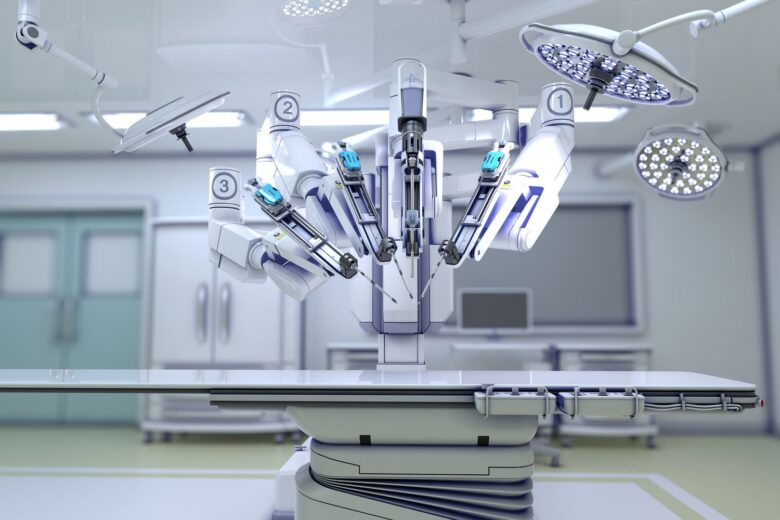Surgical procedures are evolving drastically in the era of advanced technology, and at the heart of this transformation is the rise of robotics in the operating room. Robotic surgery, once a futuristic concept, is now a reality reshaping how healthcare professionals approach complex medical procedures. This blog outlines the pivotal role robots play in modern surgeries, the benefits they deliver to patients, their applications across different surgical fields, the challenges that still exist, and what the future might hold for this groundbreaking technology.
How Robots Assist Surgeons
Robotic surgery does not mean a machine operates on a patient autonomously. Instead, it involves a highly trained surgeon controlling advanced robotic systems to perform precise movements that would be arduous, and sometimes impossible, by hand. These systems, such as the da Vinci Surgical System, often include robotic arms, 3D high-definition cameras, and small surgical instruments that enhance surgical precision and control.
For example, in procedures requiring intricate manoeuvres, like heart bypass surgeries and prostatectomies, the robotic arms can move in ways that human wrists cannot. They also eliminate hand tremors, significantly improving the surgeon’s ability to execute fine movements. This assistance allows surgeons to conduct minimally invasive procedures more effectively than traditional techniques.
Robots also provide real-time imaging and feedback, enabling surgeons to make better-informed decisions during complex procedures. Essentially, these robotic systems act as sophisticated extensions of the surgeon, amplifying human skill with mechanical precision.
Benefits of Robotic Surgery for Patients
The rise in robotic-assisted surgeries directly benefits patients in ways that were previously unimaginable with traditional surgical methods. One of the biggest advantages is the minimally invasive nature of these procedures. Unlike open surgeries that involve large incisions, robotic surgeries are carried out through small incisions, resulting in reduced blood loss, less postoperative pain, and shorter recovery times.
Furthermore, robotic surgeries often lead to fewer complications, as the precision of robotic technology minimises risks such as damage to surrounding tissues or organs. For example, in gynaecological surgeries, the enhanced visibility provided by 3D imaging reduces the likelihood of accidental injuries to nearby structures.
Patients also benefit from better aesthetic outcomes, as smaller scars from robotic surgeries heal more discreetly compared to the larger scars from traditional procedures. Faster recovery times translate into shorter hospital stays, which is not only more convenient for patients but also reduces healthcare costs.
Applications of Robots in Different Surgical Fields
The versatility of robotic surgery extends across various medical specialisations, demonstrating its value in different contexts.
- General Surgery: Robots are frequently used in procedures like hernia repairs, gallbladder removal, and colon surgeries. Their ability to perform precise cuts and sutures enhances the outcomes of these operations.
- Cardiology: Robotic systems aid in coronary artery bypass, heart valve surgeries, and repair procedures that demand pinpoint accuracy in small and sensitive areas.
- Gynaecology: From hysterectomies to pelvic reconstructions, robotic assistance is widely employed in gynaecological care, improving outcomes and decreasing recovery times.
- Oncology: Cancer surgeries are increasingly relying on robotic systems to ensure clean margins and better tumour targeting. This approach is particularly effective in delicate areas like the throat, prostate, and lungs.
- Orthopaedics: Robots are revolutionising joint surgeries, such as knee or hip replacements, where precision in alignment is critical for long-lasting results.
From intricate neurosurgical interventions to ear, nose, and throat (ENT) procedures, the applications of robots are spreading rapidly across the medical field.
Challenges and Limitations
Despite the promise of robotic surgery, its widespread adoption is not without hurdles. One of the primary challenges is the high cost of robotic systems, which can exceed several million dollars. Consequently, many hospitals, particularly those in underserved areas, may find it difficult to afford these technologies.
Additionally, robotic surgeries require surgeons to undergo rigorous training to operate the systems effectively. The learning curve can be steep, and inexperienced surgeons may initially face challenges in delivering optimal outcomes.
Technical challenges also exist. Despite its advanced systems, robotic surgery is not immune to malfunctions or downtime. Cases of software errors, hardware issues, or mechanical failures could potentially disrupt procedures, although these instances are rare.
Lastly, some critics argue that the current data comparing robotic surgeries to traditional surgical methods is not extensive enough to fully quantify its long-term benefits. Questions about reliability, access, and whether the advantages outweigh the costs remain areas of active debate.
The Future of Robotic Surgery
Looking ahead, the landscape of robotic surgery appears brimming with potential. The integration of artificial intelligence (AI) and machine learning promises to enhance the decision-making capabilities of robotic systems, potentially allowing them to provide real-time suggestions during operations. Imagine a robotic assistant that not only follows a surgeon’s commands but also offers insights based on millions of previous surgeries.
Additionally, advancements in telemedicine and 5G connectivity could make remote robotic surgeries a widespread reality. Surgeons in one part of the world may soon be able to perform operations in remote or underserved areas using robotic systems controlled over high-speed networks.
Costs are also expected to decrease as more companies enter the robotic surgery market, fostering competition that could make these technologies accessible to more hospitals globally. Wearable robotic systems and miniaturised robots capable of navigating the human body are other innovations currently under development. With these advancements, robotic surgery is expected to become an integral part of mainstream medicine, significantly improving the quality of surgical care available to patients worldwide.
What Patients Should Keep in Mind
Robots in surgery hold undeniable promise, but patients considering robotic-assisted procedures should have thorough discussions with their doctors about the pros and cons. Factors like the surgeon’s experience with robotic systems, the complexity of the procedure, and the available hospital infrastructure should all be considered when making decisions.
FAQs
1. What is robotic surgery?
Robotic surgery is a minimally invasive surgical technique where surgeons use robotic systems to perform precise and controlled procedures.
2. Is robotic surgery better than traditional surgery?
Depending on the procedure, robotic surgery often results in smaller incisions, reduced recovery times, and fewer complications, although traditional methods remain effective in certain cases.
3. How much does robotic surgery cost?
The cost of robotic surgeries can be higher than traditional methods due to the expensive technology involved, but costs may decrease as technology becomes more accessible.
4. Are robotic surgeries safe?
Yes, robotic surgeries are generally safe and are performed by highly trained surgeons using advanced systems that minimise risks.
5. Can robots operate autonomously?
No, robotic surgery involves human surgeons controlling the robotic systems. These systems enhance the surgeon’s precision but do not function autonomously.




